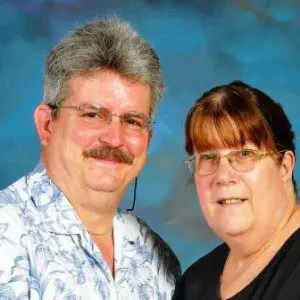 Candy and I do not have any of our Diaconate formation classes over the summer. Since there will be a number of months before our next series of classes start, I thought that I would share some FAQ’s about the Diaconate. As always, please don’t hesitate to respond or to contact me with any questions about becoming a deacon or about these blogs, Jay Krueger.
Candy and I do not have any of our Diaconate formation classes over the summer. Since there will be a number of months before our next series of classes start, I thought that I would share some FAQ’s about the Diaconate. As always, please don’t hesitate to respond or to contact me with any questions about becoming a deacon or about these blogs, Jay Krueger.
TRUE OR FALSE:
9. Lay ministries are not needed in parishes with a deacon.
10. Deacons do not have the same formation as priests.
11. There are more deacons in the United States than in all other countries combined.
Answers
9. FALSE. The main function of the deacon is to imitate Christ as a sign and sacrament of service. Parishes, and deacons, are called to be Christ’s hands, feet and mouth in the world. Most people will acknowledge that often our parishes fall far short of this goal. The focus of the deacon is to serve in such a way that encourages each and every Christian to imitate Christ.
Lectors, lay Eucharistic ministers, acolytes, and other lay persons need not feel threatened by the presence of a deacon. The deacon is not a lay person, he is a member of the clergy. His primary focus is to highlight needs that are not being met within the life of the community. Strong lay participation in a parish may negate the need for a deacon. (And this would delight the deacon, you can be sure!) The exception to this may be parishes with no priest. There have been deacons assigned to such parishes in recent years.
10. TRUE. The formation programs are separate. Deacons undergo a formation that takes five years in the Archdiocese of Los Angeles; formation for a priest is generally a year or two longer. Deacons and priests learn many of the same things, such as the study of the bible, church history, interpersonal dynamics, liturgics, and theology. However, deacons and priests are preparing for distinctly different forms of service. Also, the deacon must learn to balance the demands of family, secular job and formation. There are also requirements relating to age, duration of marriage, and number of years a Roman Catholic.
The sacrament of holy orders is irrevocable. It is extremely important that the discernment of a call be confirmed prior to ordination. In most dioceses, the number of deacon candidates accepted for ordination is a small percentage of those who apply for admission to the program.
According to the latest CARA study, the Archdiocese of Los Angeles has the greatest number Permanent Deacons (both active and retired) at 434.
11. TRUE. There are over 17,000 deacons in the United States. When the permanent diaconate was restored, it was expected to grow fastest in third world countries. However, the most notable growth has been in the United States and Germany. There are an average of 15-20 permanent deacons ordained in the Arch Diocese of Los Angeles each year with over 300 currently ministering.
There are several reasons for this growth. The Church in America is blessed with excellent educational and financial resources. The enthusiastic reception of Vatican II reforms in the United States gave added impetus to the proliferation of vocations to the diaconate. The spiritual need of the Church in America has never been greater. I like to think that God has raised up deacons in America to remind us that the power of the Holy Spirit is stronger than the forces of evil in our midst.
How did you do? Here’s the grading scale:
11 out of 11 correct: Wow! You must be a deacon or the wife of one!
At least 8 correct: Very good. Your knowledge of the diaconate needs to be shared with friends and family!
At least 5 correct: Not bad– some of the questions were tricks, anyway! You might have learned a thing or two from this test.
Less than 4 correct: Maybe those trick questions were too unfair! In any case, you might be interested in the following books: The Deacon in the Church, by Lynn Swanson (Alba House (800) 343-ALBA); Permanent Deacons: Who They Are and What They Do by Henry Libersat (booklet from Liguori Publications available in most Catholic bookstores); Permanent Deacons: Guidelines on their Formation and Ministry (Publication 974-2, USCC, (800) 235-8722.)
Original article taken from the May 14, 1995 issue of “Catholic Twin Circle.”
If you are interested in becoming a Deacon Couple, please contact:
Diaconate Formation Office
Archdiocese of Los Angeles
3424 Wilshire Boulevard, 2nd Floor
Los Angeles, CA 90010-2241
213-637-7383
If you have any questions about the Diaconate, please ask us or send us an e-mail to wyb@wyb.com. We greatly appreciate your prayers and support and will continue to keep you informed of our journey.
Candy & Jay Krueger,
Aspirancy Year, Deacon Couple Formation,
Holy Family Parish, South Pasadena
